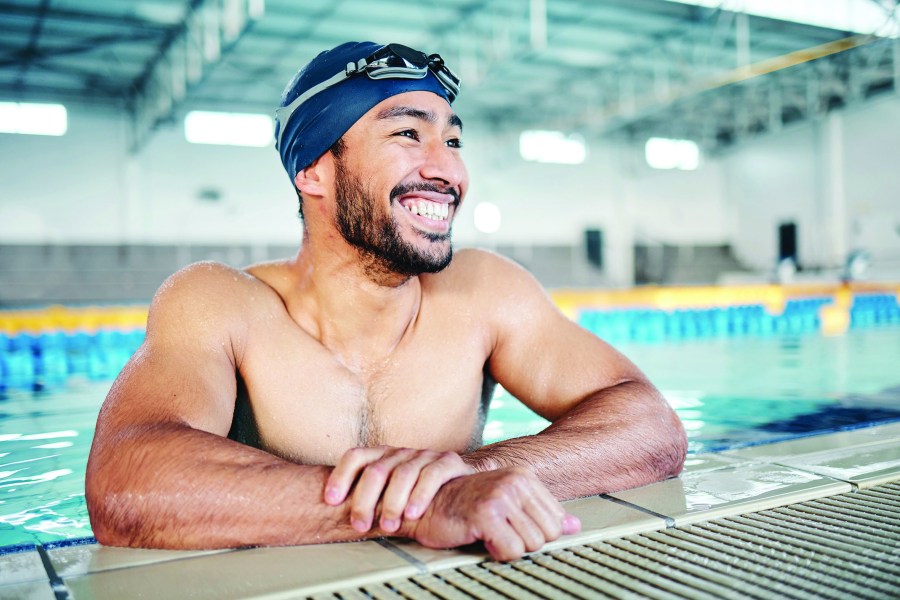Whether it’s swimming, saunas or showering, don’t let swimmer’s ear stop your workout – use Earcalm
You’re grinding out laps at the pool, pushing your limits. Maybe you just crushed a CrossFit WOD and hit the steam room for a well-earned cool down. But a day or two later, your ear feels off – itchy, painful. Could it be swimmer’s ear?
Despite its name, it’s not just swimmers who are prone to the condition – read on to find out more!
What exactly is swimmer’s ear?
Swimmer’s ear, also known as otitis externa, is an infection of the outer ear canal. ‘Otitis’ means inflammation of the ear.
It typically happens when water or moisture gets trapped in the ear after swimming, showering, or sweating, creating a warm, moist environment where bacteria thrive.
Who is at risk of getting it?
From pool or open water swimming to saunas and showering – if your ears are regularly exposed to water or moisture, you’re more likely to get swimmer’s ear. Water will often find its own way out but if it gets stuck in the ear, it can wear down the ears’ natural waxy defences allowing bacteria to form and thrive.
You may also find yourself scratching or picking your ear when there’s water inside which can damage the delicate skin and lead to infection. And if you wear earbuds to zone out while working out, they can trap moisture inside the ear.
Common symptoms to watch for
Swimmer’s ear doesn’t always start with earache. Early signs can be subtle, but they usually start quickly. Look out for:
• Itching and irritation in and around the ear canal.
• Redness and swelling.
• A watery or pus-like discharge.
• Tenderness when you move your ear or jaw.
• A feeling of fullness or pressure.

Can you prevent swimmer’s ear?
There are several things you can do to reduce the risk of getting it.
Wearing a swimming cap and ear plugs while swimming reduces the amount of water entering your ears.
Chlorine can have a drying effect on the ear canal potentially causing bacteria to develop so shower after a swim and dry both ears thoroughly.
Tilt your head side to side to help water drain after swimming or showering.
Don’t let ear wax build-up as excess wax can cause bacteria to grow and encourage recurrent infections.
Symptom relief
If symptoms are painful, you can take paracetamol or ibuprofen. Or, for quick relief, you could try Earcalm Spray. You should hold off swimming until the infection has fully cleared and be careful not to get the affected ear wet when showering.
Don’t put anything inside the ear – a cotton bud or a finger! – and avoid wearing anything that might make the infection worse such as ear plugs or ear buds. While swimmer’s ear is a fairly common condition it can throw your fitness regime off track.
Keeping the ear dry will help with its recovery so temporarily park the swims and opt for some dry land alternatives.
• Find out more: earcalm.co.uk
Earcalm Spray is used to treat minor infections of the outer ear. It contains acetic acid, an antibacterial agent that targets the bacteria causing the infection, helping to relieve the symptoms of pain and inflammation. Always read the label.








